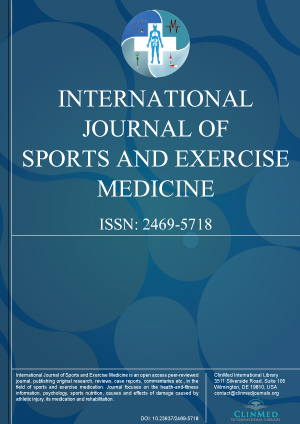Archive
Open Access DOI:10.23937/2469-5718/1510103
Koya Mine
Article Type: Research Article | First Published: August 27, 2018
Article Formats
- Abstract
- Full Article
- XML
- EPub Reader
Open Access DOI:10.23937/2469-5718/1510102
High Level Cycling Performance 10 Years after Cardiac Transplantation
Grazzi Giovanni, Totti Valentina, Myers Jonathan, Mosconi Giovanni, Gambaretto Camilla, Sambri Vittorio, Trerotola Manuela, Nanni Costa Alessandro and Sella Gianluigi
Article Type: Case Report | First Published: August 23, 2018
Article Formats
- Full Article
- XML
- EPub Reader
Open Access DOI:10.23937/2469-5718/1510101
Santiago Tavares Paes and Renato Marques Bianchini
Article Type: Perspective Article | First Published: August 04, 2018
Article Formats
- Full Article
- XML
- EPub Reader
Open Access DOI:10.23937/2469-5718/1510100
Santiago Tavares Paes
Article Type: Communication | First Published: August 04, 2018
Article Formats
- Full Article
- XML
- EPub Reader
Open Access DOI:10.23937/2469-5718/1510099
Sulaiman Omar Aljaloud
Article Type: Original Research | First Published: July 14, 2018
Article Formats
- Full Article
- XML
- EPub Reader
Open Access DOI:10.23937/2469-5718/1510098
Emma Swanwick, David B. Pyne, Bernard Savage and Martyn Matthews
Article Type: Research Article | First Published: July 11, 2018
Article Formats
- Full Article
- XML
- EPub Reader
Open Access DOI:10.23937/2469-5718/1510097
Nutritional and Pharmacological Strategies of Bodybuilders in Preparation Period for Competition
Amanda Assenheimer, Igor Brandao, Mauricio Schüler Nin and Rafael Longhi
Article Type: Research Article | First Published: July 09, 2018
Article Formats
- Full Article
- XML
- EPub Reader
Open Access DOI:10.23937/2469-5718/1510096
Rayna M Sansanwal, Jeffrey L Derevensky and Thomas S Paskus
Article Type: Research Article | First Published: July 05, 2018
Article Formats
- Full Article
- XML
- EPub Reader
Open Access DOI:10.23937/2469-5718/1510095
Paulo Farinatti, Felipe A Cunha, Walace Monteiro, Nadia L Silva and Gabriela Venturini
Article Type: Research Article | First Published: July 05, 2018
Article Formats
- Full Article
- XML
- EPub Reader
Open Access DOI:10.23937/2469-5718/1510094
David M Kleinman
Article Type: Commentary | First Published: July 05, 2018
Article Formats
- Full Article
- XML
- EPub Reader
Open Access DOI:10.23937/2469-5718/1510093
NGAYIMBESHA Adrien, BIZIMANA Jean Berchmans, GAKIMA Marie Stella and NZISABIRA Felix
Article Type: Research Article | First Published: July 04, 2018
Article Formats
- Full Article
Open Access DOI:10.23937/2469-5718/1510092
Harin Parikh, Aubrey Armento, Tessa Mandler and Jay Albright
Article Type: Case Report | First Published: July 04, 2018
Article Formats
- Full Article

Volume 4
Issue 3
Issue 3
